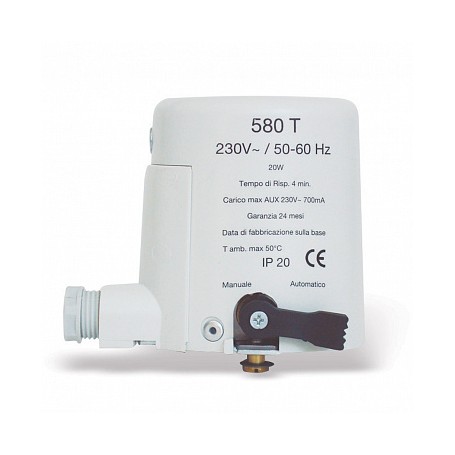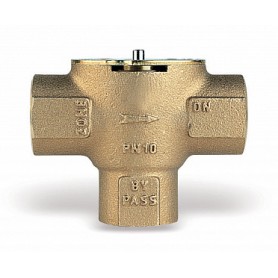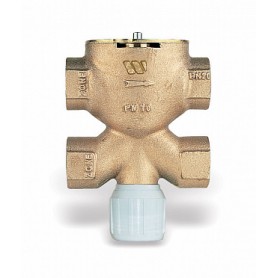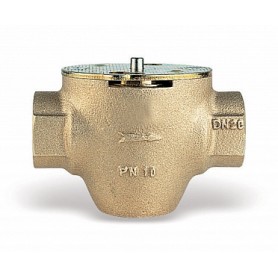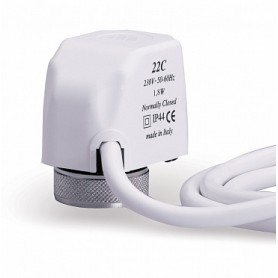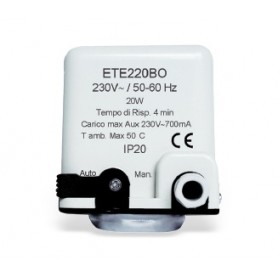Watts Electrothermal Actuator - 580T
Two-position electrothermal actuator for zone valves Series 561T, 560T, 571T. Normally open auxiliary microswitch (NO) for supplementary commands (e.g. pump, metering). Sealable anti-tamper device.
Coupling on the bayonet valve body. External manual opening command. Positioning time: 4-5 min. Absorbed power: 20W (230V), 18W (24V).
Operation
The zone valves, electrically connected to a room thermostat, have two-position operation (on/off). The
slow and silent movement of the valve obturator, which in rest conditions is normally closed, is entrusted to a
wax sensing element contained in the 580T Series actuator. In the automatic functioning condition the valve, at the
when the room thermostat contact closes, it opens, as the thermostatic element due to the heat generated by the
electrical resistance that surrounds it, expands and pushes the valve stem. A safety microswitch
interrupts the electric power supply to the resistance when the stem has reached the end of stroke position (valve completely
open), but continues to supply voltage at regular intervals until the room thermostat contact opens. A spring of
contrast restores the starting position of the stem (valve closed), when the resistance is no longer powered. A clean contact
switching auxiliary closes before the intervention of the microswitch and allows the start-up of the circulation pump, the
accounting system or other equipment. In manual operation (Fig.1), to be used only with the valve closed,
the control lever external to the actuator allows the valve to be opened without excluding the auxiliary contact, ensuring this
correct functioning of the system, especially in the case of heat metering
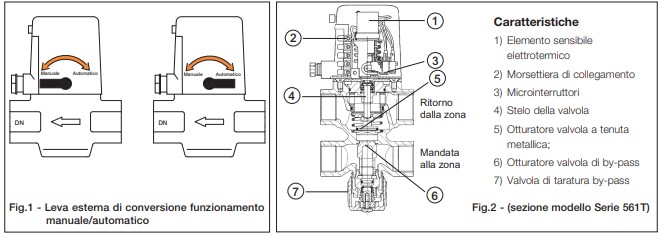
Free Shipping Over:
-
149€ 🇮🇹
-
249€ 🇩🇪 🇦🇹
-
299€ 🇧🇪 🇫🇷 🇱🇺 🇳🇱 🇵🇱 🇨🇿
-
349€ 🇩🇰 🇵🇹 🇸🇰 🇪🇸 🇭🇺
-
399€ 🇧🇬 🇭🇷 🇪🇪 🇮🇪 🇱🇻 🇱🇹 🇷🇴 🇸🇮 🇸🇪
-
999£ 🇬🇧 🇨🇭 customs duties included

